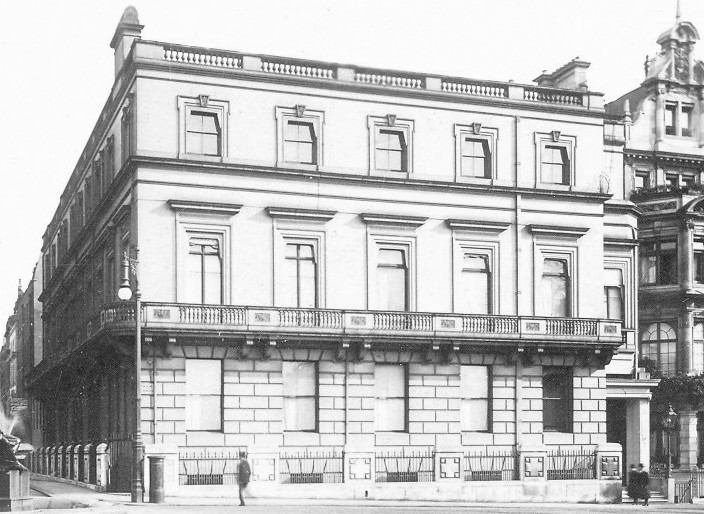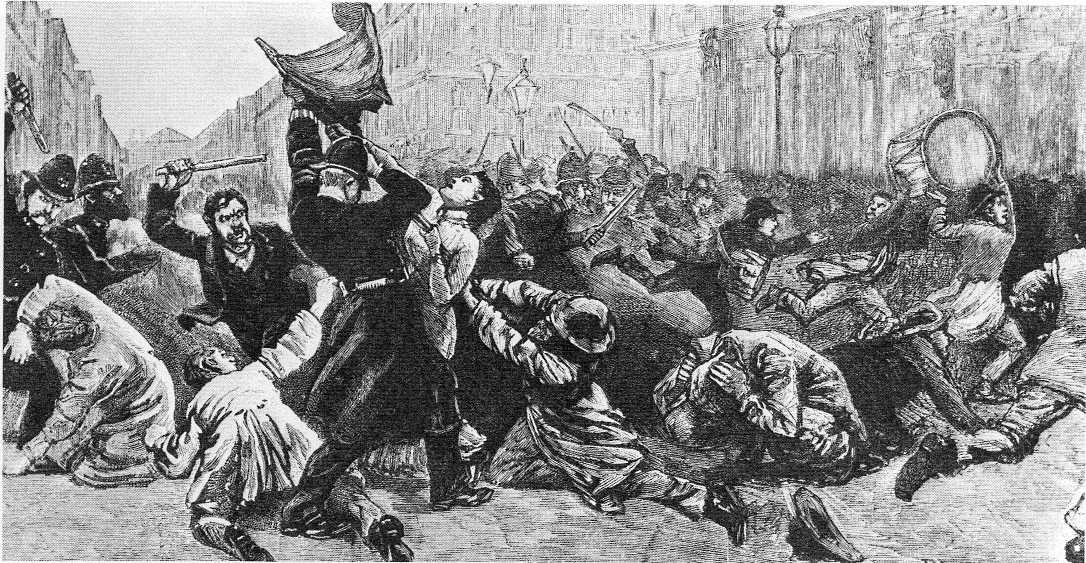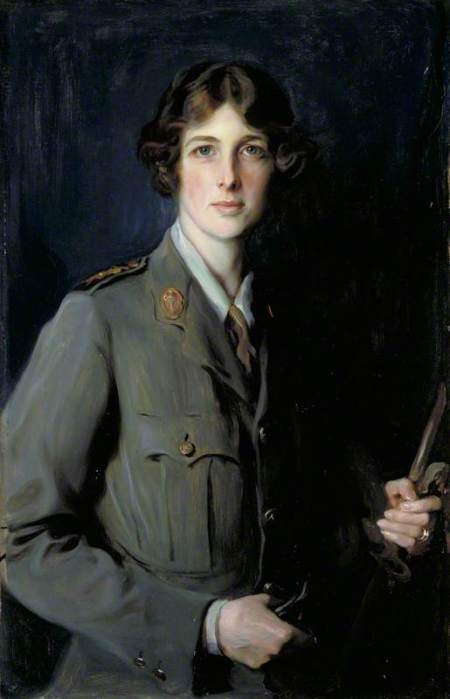|
Harford Hyde
Harford Montgomery Hyde (14 August 190710 August 1989), born in Belfast, Ireland, was a barrister, politician (Ulster Unionist MP for Belfast North), prolific author and biographer. He was deselected by his party in 1959, losing his seat in the House of Commons, as a result of campaigning on homosexual law reform. Background Born at 16 Malone Road in Belfast, Hyde was schooled in England at Sedbergh, Cumbria. His father, James Johnstone Hyde, was a linen merchant and Unionist councillor for Cromac. Hyde took pride in his family connection to the Irish linen trade. Although his mother came from a Protestant Home Rule background, all were involved in the 1914 UVF gun running, the seven-year-old Harford being a dummy casualty for first-aid practice. He attended Queen's University Belfast where he gained a first-class history degree, and later Magdalen College, Oxford, where he attained a second-class law degree. He was married in 1939 to Dorothy Mabel Brayshaw Crofts (divorc ... [...More Info...] [...Related Items...] OR: [Wikipedia] [Google] [Baidu] |
Member Of Parliament (United Kingdom)
In the United Kingdom, a member of Parliament (MP) is an individual elected to serve in the House of Commons of the Parliament of the United Kingdom. Electoral system All 650 members of the UK House of Commons are elected using the first-past-the-post voting system in single member constituencies across the whole of the United Kingdom, where each constituency has its own single representative. Elections All MP positions become simultaneously vacant for elections held on a five-year cycle, or when a snap election is called. The Fixed-term Parliaments Act 2011 set out that ordinary general elections are held on the first Thursday in May, every five years. The Act was repealed in 2022. With approval from Parliament, both the 2017 and 2019 general elections were held earlier than the schedule set by the Act. If a vacancy arises at another time, due to death or resignation, then a constituency vacancy may be filled by a by-election. Under the Representation of the People Act 198 ... [...More Info...] [...Related Items...] OR: [Wikipedia] [Google] [Baidu] |
Cumbria
Cumbria ( ) is a ceremonial and non-metropolitan county in North West England, bordering Scotland. The county and Cumbria County Council, its local government, came into existence in 1974 after the passage of the Local Government Act 1972. Cumbria's county town is Carlisle, in the north of the county. Other major settlements include Barrow-in-Furness, Kendal, Whitehaven and Workington. The administrative county of Cumbria consists of six districts ( Allerdale, Barrow-in-Furness, Carlisle, Copeland, Eden and South Lakeland) and, in 2019, had a population of 500,012. Cumbria is one of the most sparsely populated counties in England, with 73.4 people per km2 (190/sq mi). On 1 April 2023, the administrative county of Cumbria will be abolished and replaced with two new unitary authorities: Westmorland and Furness (Barrow-in-Furness, Eden, South Lakeland) and Cumberland ( Allerdale, Carlisle, Copeland). Cumbria is the third largest ceremonial county in England by area. It i ... [...More Info...] [...Related Items...] OR: [Wikipedia] [Google] [Baidu] |
Intelligence Corps (United Kingdom)
The Intelligence Corps (Int Corps) is a corps of the British Army. It is responsible for gathering, analysing and disseminating military intelligence and also for counter-intelligence and security. The Director of the Intelligence Corps is a brigadier. History 1814–1914 In the 19th century, British intelligence work was undertaken by the Intelligence Department of the War Office. An important figure was Sir Charles Wilson, a Royal Engineer who successfully pushed for reform of the War Office's treatment of topographical work. In the early 1900s intelligence gathering was becoming better understood, to the point where a counter-intelligence organisation (MI5) was formed by the Directorate of Military Intelligence (DoMI) under Captain (later Major-General) Vernon Kell; overseas intelligence gathering began in 1912 by MI6 under Commander (later Captain) Mansfield Smith-Cumming. 1914–1929 Although the first proposals to create an intelligence corps came in 1905, the first In ... [...More Info...] [...Related Items...] OR: [Wikipedia] [Google] [Baidu] |
British Army
The British Army is the principal land warfare force of the United Kingdom, a part of the British Armed Forces along with the Royal Navy and the Royal Air Force. , the British Army comprises 79,380 regular full-time personnel, 4,090 Gurkhas, and 28,330 volunteer reserve personnel. The modern British Army traces back to 1707, with antecedents in the English Army and Scots Army that were created during the Restoration in 1660. The term ''British Army'' was adopted in 1707 after the Acts of Union between England and Scotland. Members of the British Army swear allegiance to the monarch as their commander-in-chief, but the Bill of Rights of 1689 and Claim of Right Act 1689 require parliamentary consent for the Crown to maintain a peacetime standing army. Therefore, Parliament approves the army by passing an Armed Forces Act at least once every five years. The army is administered by the Ministry of Defence and commanded by the Chief of the General Staff. The Brit ... [...More Info...] [...Related Items...] OR: [Wikipedia] [Google] [Baidu] |
Londonderry House
Londonderry House was an aristocratic townhouse situated on Park Lane in the Mayfair district of London, England. The mansion served as the London residence of the Marquesses of Londonderry. It remained their home until 1962. In that year Londonderry House was sold by the Trustees of the 7th Marquess of Londonderry's Will Trusts to a developer who built the "Londonderry Hotel" on the site, not (as is sometimes, erroneously, stated) the Hilton. The Hilton Hotel is on the other side of the street, and had already been opened. COMO Metropolitan London now occupies the site of Londonderry House. History Holderness House, later Londonderry House, was designed by Athenian Stuart for Robert Darcy, 4th Earl of Holderness in the period c. 1760–5, with ceilings based on Robert Wood's ''Ruins of Palmyra''. The Earl is thought to have acquired the building next door as well, but at a later date. He subsequently joined the two so that the house became a double-fronted London mansion. The ... [...More Info...] [...Related Items...] OR: [Wikipedia] [Google] [Baidu] |
Ramsay MacDonald
James Ramsay MacDonald (; 12 October 18669 November 1937) was a British politician who served as Prime Minister of the United Kingdom, the first who belonged to the Labour Party, leading minority Labour governments for nine months in 1924 and again between 1929 and 1931. From 1931 to 1935, he headed a National Government dominated by the Conservative Party and supported by only a few Labour members. MacDonald was expelled from the Labour Party as a result. MacDonald, along with Keir Hardie and Arthur Henderson, was one of the three principal founders of the Labour Party in 1900. He was chairman of the Labour MPs before 1914 and, after an eclipse in his career caused by his opposition to the First World War, he was Leader of the Labour Party from 1922. The second Labour Government (1929–1931) was dominated by the Great Depression. He formed the National Government to carry out spending cuts to defend the gold standard, but it had to be abandoned after the Invergordon Mu ... [...More Info...] [...Related Items...] OR: [Wikipedia] [Google] [Baidu] |
Edith Vane-Tempest-Stewart, Marchioness Of Londonderry
Edith Helen Vane-Tempest-Stewart, Marchioness of Londonderry, DBE (''née'' Chaplin; 3 December 1878 – 23 April 1959) was a noted and influential society hostess in the United Kingdom between World War I and World War II, a friend of the first Labour prime minister, Ramsay MacDonald. She was a noted gardener and a writer and editor of the works of others. Early life Born as Edith Helen Chaplin in Blankney, Lincolnshire, she was the daughter of Henry Chaplin, landowner and Conservative politician and later the 1st Viscount Chaplin (1840–1923), and Lady Florence Sutherland-Leveson-Gower (1855–1881). After the death of her mother in 1881, Edith was raised largely at Dunrobin Castle, Sutherland, the estate of her maternal grandfather, the third Duke of Sutherland. Public works In 1914, after the outbreak of World War I, she was appointed the Colonel-in-Chief of the Women's Volunteer Reserve (WVR), a volunteer force formed of women replacing the men who had ... [...More Info...] [...Related Items...] OR: [Wikipedia] [Google] [Baidu] |
Charles Vane-Tempest-Stewart, 7th Marquess Of Londonderry
Charles Stewart Henry Vane-Tempest-Stewart, 7th Marquess of Londonderry, (13 May 1878 – 10 February 1949), styled Lord Stewart until 1884 and Viscount Castlereagh between 1884 and 1915, was a British peer and politician. He is best remembered for his tenure as Secretary of State for Air in the 1930s and for his attempts to reach an understanding with Nazi Germany. In 1935 he was removed from the Air Ministry but retained in the Cabinet as Lord Privy Seal and Leader of the House of Lords. His main record at the Air Ministry included: Background and education The eldest son of The 6th Marquess of Londonderry and Lady Theresa Susey Helen, daughter of The 19th Earl of Shrewsbury, he was educated at Eton College and at the Royal Military College, Sandhurst. His father's family were of partial East Donegal Ulster-Scots descent. Early career On 22 May 1895, Lord Castlereagh was appointed a second lieutenant in the 2nd (Seaham) Durham Artillery Volunteer Corps, a corps wit ... [...More Info...] [...Related Items...] OR: [Wikipedia] [Google] [Baidu] |
London
London is the capital and largest city of England and the United Kingdom, with a population of just under 9 million. It stands on the River Thames in south-east England at the head of a estuary down to the North Sea, and has been a major settlement for two millennia. The City of London, its ancient core and financial centre, was founded by the Romans as '' Londinium'' and retains its medieval boundaries.See also: Independent city § National capitals The City of Westminster, to the west of the City of London, has for centuries hosted the national government and parliament. Since the 19th century, the name "London" has also referred to the metropolis around this core, historically split between the counties of Middlesex, Essex, Surrey, Kent, and Hertfordshire, which largely comprises Greater London, governed by the Greater London Authority.The Greater London Authority consists of the Mayor of London and the London Assembly. The London Mayor is distinguished fr ... [...More Info...] [...Related Items...] OR: [Wikipedia] [Google] [Baidu] |
Called To The Bar
The call to the bar is a legal term of art in most common law jurisdictions where persons must be qualified to be allowed to argue in court on behalf of another party and are then said to have been "called to the bar" or to have received "call to the bar". "The bar" is now used as a collective noun for barristers, but literally referred to the wooden barrier in old courtrooms, which separated the often crowded public area at the rear from the space near the judges reserved for those having business with the court. Barristers would sit or stand immediately behind it, facing the judge, and could use it as a table for their briefs. Like many other common law terms, the term originated in England in the Middle Ages, and the ''call to the bar'' refers to the summons issued to one found fit to speak at the "bar" of the royal courts. In time, English judges allowed only legally qualified men to address them on the law and later delegated the qualification and admission of barristers t ... [...More Info...] [...Related Items...] OR: [Wikipedia] [Google] [Baidu] |
Public Record Office Of Northern Ireland
The Public Record Office of Northern Ireland (PRONI) is situated in Belfast, Northern Ireland. It is a division within the Engaged Communities Group of the Department for Communities (DfC). The Public Record Office of Northern Ireland is distinguished from other archival institutions in the United Kingdom by its unique combination of private and official records. The Record Office is not the Northern Ireland equivalent or imitation of any Great Britain or Republic of Ireland archival institution. It combines the functions and responsibilities of a range of institutions: it is at the same time Public Record Office, manuscripts department of a national library, county record office for the six counties of Northern Ireland, and holder of a large range of private records. This range of remit, embracing, among others, central and local government, the churches and the private sector, is unique to Northern Ireland. History PRONI was established by the Public Records Act (Northern I ... [...More Info...] [...Related Items...] OR: [Wikipedia] [Google] [Baidu] |
Larne Gun Running
The Larne gun-running was a major gun smuggling operation organised in April 1914 in Ireland by Major Frederick H. Crawford and Captain Wilfrid Spender for the Ulster Unionist Council to equip the Ulster Volunteer Force. The operation involved the smuggling of almost 25,000 rifles and between 3 and 5 million rounds of ammunition from the German Empire, with the shipments landing in Larne, Donaghadee, and Bangor in the early hours between Friday 24 and Saturday 25 April 1914. The Larne gun-running may have been the first time in history that motor-vehicles were used "on a large scale for a military-purpose, and with striking success". Background In November 1910 the Ulster Unionist Council formed a secret committee to oversee the creation of a force in Ulster to fight against the imposition of Home Rule, which was proposed to give Ireland self-government within the United Kingdom of Great Britain and Ireland. The Council approached Major Frederick H. Crawford to act as its ag ... [...More Info...] [...Related Items...] OR: [Wikipedia] [Google] [Baidu] |




